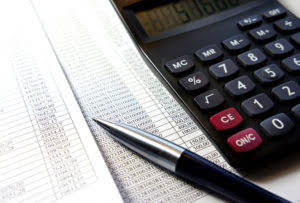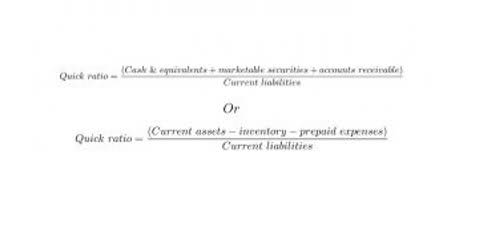
After trying to contact the customer a number of times, Natalie finally decides that she will never be able to recover this $ 1,500 and decides to write off the balance from such a customer. Using the direct write-off method, Natalie would debit the bad debts expenses account by $ 1,500 and credit the accounts receivable account with the same amount. The alternative to the direct write off method is to create a provision for bad debts in the same period that you recognize revenue, which is based upon an estimate of what bad debts will be.

Accounts Receivable Ratios

Based on prior years, a company can reasonably estimate what percentage of the sales measure will not be collected. If a company takes a percentage of sales (revenue), the calculated amount is the amount of the related bad debt expense. The specific action used to write off an account receivable under this method with accounting software is to create a credit memo for the customer in question, which offsets the amount of the bad debt. Creating the credit memo creates a debit to a bad debt expense account and a credit to the accounts receivable account. Therefore, the business would credit accounts receivable of $10,000 and debit bad debt expense of $10,000.
Direct write-off method vs allowance method
You’ll need to decide how you want to record this uncollectible money in your bookkeeping practices. Let us understand direct write-off method the direct write-off method journal entries with the help of a couple of examples. These examples shall give us a practical overview of the concept and its intricacies. Kristin is a Certified Public Accountant with 15 years of experience working with small business owners in all aspects of business building.
- Choosing the right method for accounting for bad debt is essential for accurate financial reporting and compliance with accounting standards.
- Once we have a specific account, we debit Allowance for Doubtful Accounts to remove the amount from that account.
- Kristin is also the creator of Accounting In Focus, a website for students taking accounting courses.
- When a customer is identified as uncollectible, we would credit Accounts Receivable.
- We cannot debit bad debt because we have already recorded bad debt to cover the percentage of sales that would go bad, including this sale.
Reporting Bad Debts
- Choose CFI for unparalleled industry expertise and hands-on learning that prepares you for real-world success.
- The entry from December 31 would be added to that balance, making the adjusted balance $60,500.
- The specific action used to write off an account receivable under this method with accounting software is to create a credit memo for the customer in question, which offsets the amount of the bad debt.
- As a result, financial statements prepared using this method may not provide a fair and accurate representation of a company’s financial health.
- The allowance method adheres to the GAAP and reports estimates of bad debt expenses within the same period as sales.
We already know this is a bad debt entry because we are asked to record bad debt. We are also told that the company is estimating bad debt, so this is clearly not a company that uses direct write-off. Therefore, we will be using Allowance for Doubtful Accounts and Bad Debt Expense. The allowance method estimates bad debt expense at the end of the fiscal year, setting up a reserve account called allowance for doubtful accounts. Similar to its name, the allowance for doubtful accounts reports a prediction of receivables that are “doubtful” to be paid. Since bad debts are recognized only when they occur, there is an immediate effect on the financial results for that period.

Percentage of Receivables
Overestimating bad debts can result in understating net income and accounts receivable, while underestimating can lead to an overstatement of financial health. These estimation errors can impact the reliability of financial statements and may require adjustments in future periods. For example, revenue and accounts receivable Interior Design Bookkeeping may be overstated in one period, while expenses are understated, only to be corrected in a later period when the bad debt is written off.
Journal Entries
Bad debt can be reported on the financial statements using the direct write-off method or the allowance method. Materiality considerations permitted a departure from the best approach. It is a matter of judgment, relating only to the conclusion that the choice among alternatives really has very little bearing on the reported outcomes.
- After two months, the customer is only able to pay $8,000 of the open balance, so the seller must write off $2,000.
- The amount of money written off with the allowance method is estimated through the accounts receivable aging method or the percentage of sales method.
- If the company uses a percentage of sales method, it must ensure that there will be enough in Allowance for Doubtful Accounts to handle the amount of receivables that go bad during the year.
- We do not record any estimates or use the Allowance for Doubtful Accounts under the direct write-off method.
- When using an allowance method, it is critical to know what you are calculating.
- Under the allowance method, an estimate of the future amount of bad debt is charged to a reserve account as soon as a sale is made.
It is important for management to monitor the balance to ensure the balance is reasonable. We must create a holding account to hold the allowance so that when a customer is deemed uncollectible, we can use up part of that allowance to reduce accounts receivable. Allowance for Doubtful Accounts is a contra-asset linked to Accounts Receivable. The allowance is used the reduce the net amount of receivables that are due while leaving all the customer balances intact. It seems counterintuitive to restore the balance to pay it off, but for recordkeeping purposes, it is necessary to restore the account balance and show the customer properly paid his debt. We must make sure to show that Joe Smith paid the amount he owed, not just the fact that the company received some cash.
What is Bad Debt Expense?

The direct write-off method does not comply with the generally accepted accounting principles (GAAP), according to the Houston Chronicle. The timing of bad debt recognition is a key differentiator between the Direct Write-Off Method and the Allowance Method. When it comes to large material amounts, the allowance method is preferred compared to the direct write-off method. However, many companies still use the direct write-off for small amounts. Bad debt, or the inability to collect money owed to you, is an unfortunate reality that small business owners must occasionally deal with.
Better Reflection of Financial Health
Because we identified the wrong account as uncollectible, we would also need to restore the balance in the allowance account. If the customer paid the bill on September 17, we would reverse the entry from bookkeeping April 7 and then record the payment of the receivable. The percentage of sales method simply takes the total sales for the period and multiplies that number by a percentage.
